Related Research Articles
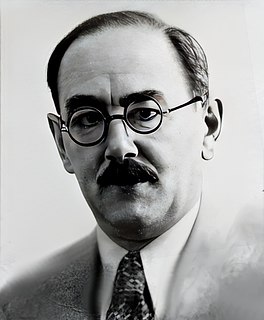
Imre Nagy was a Hungarian communist politician who served as Prime Minister and Chairman of the Council of Ministers of the Hungarian People's Republic from 1953 to 1955. In 1956 Nagy became leader of the Hungarian Revolution of 1956 against the Soviet-backed government, for which he was executed two years later.
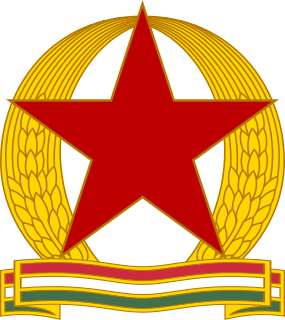
The State Protection Authority was the secret police of the People's Republic of Hungary from 1945 until 1956. It was conceived as an external appendage of the Soviet Union's secret police forces and gained an indigenous reputation for brutality during a series of purges beginning in 1948, intensifying in 1949 and ending in 1953. In 1953 Joseph Stalin died, and Imre Nagy was appointed Prime Minister of Hungary. Under Nagy's first government from 1953 to 1955, the ÁVH was gradually reined in.
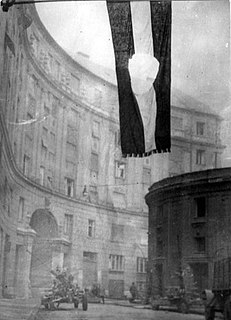
The Hungarian Revolution of 1956, or the Hungarian Uprising, was a nationwide revolution against the Hungarian People's Republic and its Soviet-imposed policies, lasting from 23 October until 10 November 1956. Leaderless at the beginning, it was the first major threat to Soviet control since the Red Army drove Nazi Germany from its territory at the End of World War II in Europe.

János Kádár was a Hungarian communist leader and the General Secretary of the Hungarian Socialist Workers' Party, presiding over the country from 1956 until his retirement in 1988. His 32-year term as General Secretary covered most of the period the People's Republic of Hungary existed. Due to Kádár's age, declining health and declining political mastery, he retired as General Secretary of the party in 1988 and a younger generation consisting mostly of reformers took over.

Gyula Horn was a Hungarian politician who served as the third Prime Minister of the Republic of Hungary from 1994 to 1998.
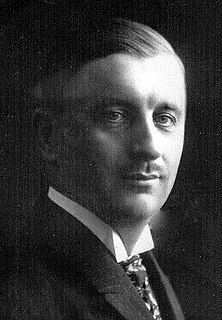
Ferenc Münnich was a Hungarian Communist politician who served as Chairman of the Council of Ministers of the People's Republic of Hungary from 1958 to 1961.
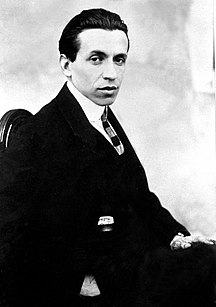
Tibor Szamuely was a Hungarian politician and journalist who was Deputy People's Commissar of War and People's Commissar of Public Education during the Hungarian Soviet Republic.

The Hungarian People's Republic was a one-party socialist republic from 20 August 1949 to 23 October 1989. It was governed by the Hungarian Socialist Workers' Party, which was under the influence of the Soviet Union. Pursuant to the 1944 Moscow Conference, Winston Churchill and Joseph Stalin had agreed that after the war Hungary was to be included in the Soviet sphere of influence. The HPR remained in existence until 1989, when opposition forces brought the end of communism in Hungary.
Goulash Communism, also commonly called Kadarism or the Hungarian Thaw, refers to the variety of communism in Hungary following the Hungarian Revolution of 1956. János Kádár and the Hungarian People's Republic imposed policies with the goal to create high-quality living standards for the people of Hungary coupled with economic reforms. These reforms fostered a sense of well-being and relative cultural freedom in Hungary with the reputation of being "the happiest barracks" of the Eastern Bloc during the 1960s to the 1970s. With elements of regulated market economics as well as an improved human rights record, it represented a quiet reform and deviation from the Stalinist principles applied to Hungary in the previous decade.
On October 22, 1956, a group of Hungarian students compiled a list of sixteen points containing key national policy demands. Following an anti-Soviet protest march through the Hungarian capital of Budapest, the students attempted to enter the city's main broadcasting station to read their demands on the air. The students were detained, and when people gathered outside the broadcasting station to call for their release, the state security police fired on the unarmed crowd, setting off the Hungarian Revolution of 1956.
- We demand the immediate evacuation of all Soviet troops, in conformity with the provisions of the Peace Treaty.
- We demand the election by secret ballot of all Party members from top to bottom, and of new officers for the lower, middle and upper echelons of the Hungarian Workers Party. These officers shall convene a Party Congress as early as possible in order to elect a Central Committee.
- A new Government must be constituted under the direction of Imre Nagy: all criminal leaders of the Stalin-Rákosi era must be immediately dismissed.
- We demand public enquiry into the criminal activities of Mihály Farkas and his accomplices. Mátyás Rákosi, who is the person most responsible for crimes of the recent past as well as for our country’s ruin, must be returned to Hungary for trial before a people’s tribunal.
- We demand general elections by universal, secret ballot are held throughout the country to elect a new National Assembly, with all political parties participating. We demand that the right of workers to strike be recognised.
- We demand revision and re-adjustment of Hungarian-Soviet and Hungarian-Yugoslav relations in the fields of politics, economics and cultural affairs, on a basis of complete political and economic equality, and of non-interference in the internal affairs of one by the other.
- We demand the complete reorganisation of Hungary’s economic life under the direction of specialists. The entire economic system, based on a system of planning, must be re-examined in the light of conditions in Hungary and in the vital interest of the Hungarian people.
- Our foreign trade agreements and the exact total of reparations that can never be paid must be made public. We demand to be precisely informed of the uranium deposits in our country, on their exploitation and on the concessions to the Russians in this area. We demand that Hungary have the right to sell her uranium freely at world market prices to obtain hard currency.
- We demand complete revision of the norms operating in industry and an immediate and radical adjustment of salaries in accordance with the just requirements of workers and intellectuals. We demand a minimum living wage for workers.
- We demand that the system of distribution be organised on a new basis and that agricultural products be utilised in rational manner. We demand equality of treatment for individual farms.
- We demand reviews by independent tribunals of all political and economic trials as well as the release and rehabilitation of the innocent. We demand the immediate repatriation of prisoners of war and of civilian deportees to the Soviet Union, including prisoners sentenced outside Hungary.
- We demand complete recognition of freedom of opinion and of expression, of freedom of the press and of radio, as well as the creation of a daily newspaper for the MEFESZ Organisation.
- We demand that the statue of Stalin, symbol of Stalinist tyranny and political oppression, be removed as quickly as possible and be replaced by a monument in memory of the martyred freedom fighters of 1848-49.
- We demand the replacement of emblems foreign to the Hungarian people by the old Hungarian arms of Kossuth. We demand new uniforms for the Army which conform to our national traditions. We demand that March 15 be declared a national holiday and that the October 6th be a day of national mourning on which schools will be closed.
- The students of the Technological University of Budapest declare unanimously their solidarity with the workers and students of Warsaw and Poland in their movement towards national independence.
- The students of the Technological University of Budapest will organise as rapidly as possible local branches of MEFESZ, and they have decided to convene at Budapest, on Saturday October 27, a Youth Parliament at which all the nation’s youth shall be represented by their delegates.

The events in Poland which led to the elimination of that country's Stalinist leadership and the rise to power of Władysław Gomułka on 19 October 1956 provoked unrest among university students in Eastern bloc countries. The state of unrest in Communist Poland began to spread into Hungary. As early as 16 October 1956, students from Szeged left the Communist-created students' union (DISZ), re-establishing the MEFESZ, a democratic organisation that the regime of Mátyás Rákosi had suppressed. Within a few days, students from Pécs, Miskolc and Sopron had done likewise. On 22 October 1956, students from the Budapest University of Technology and Economics compiled a list of sixteen points containing key national policy demands. When they found out about the intention of the Hungarian Writers' Union to express its solidarity with Poland by placing a crown near the statue of Polish general Józef Bem, a hero of the Hungarian revolution of 1848–49, the students decided to organise a parallel demonstration in support of the Poles. At the protest on the afternoon of 23 October 1956, the students read their proclamation, an act that marked the beginning of the Hungarian Revolution of 1956.

József Révai, Hungarian communist politician.
The following events occurred in October 1956:

Hungary–Russia relations refer to bilateral foreign relations between the two countries, Hungary and Russia. During the Second World War, the Soviet army took over Hungary, and in 1948 Moscow took full control of the country. It became part of the Warsaw Pact, designed as a military alliance against NATO. The relations between both countries were damaged in 1956 due to the Soviet military intervention in the revolution occurring in Hungary. Hungary expelled its communist government in 1989, and diplomatic relations with Russia were restored after the breakup of the USSR in 1991.
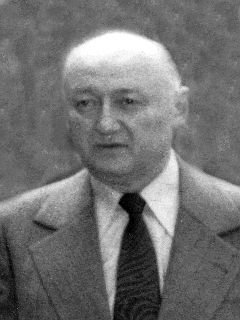
Béla Biszku was a Hungarian communist politician, who served as Minister of the Interior from 1957 to 1961. He was charged of suspicion of committing war crimes during the suppression of the Hungarian Revolution of 1956, becoming the first and to date only former top-official in Hungary who has been prosecuted because of political role in the communist era.
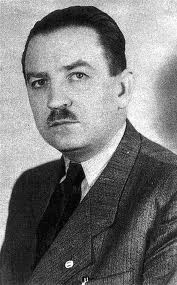
Béla Kovács was a Hungarian politician, who served as Minister of Agriculture from 1945 to 1946 and in the Hungarian Revolution of 1956.

The Hungarian Soviet Republic, literally the Republic of Councils in Hungary was a short-lived communist rump state. When the Republic of Councils in Hungary was established in 1919, it controlled approximately 23% of the territory of Hungary's classic pre-World War I territories.

A workers' council is a form of political and economic organization in which a single local administrative division, such as a municipality or a county, is governed by a council made up of temporary and instantly revocable delegates elected in the region's workplaces.

László Ladányi was a poet, author, dramatist and reporter.
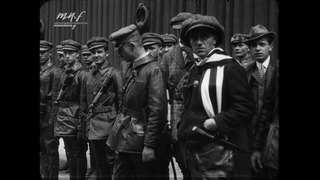
The Red Terror in Hungary was a period of repressive violence and suppression in 1919 during the four-month period of the Hungarian Soviet Republic, primarily towards anti-communist forces, and others deemed "enemies of the state". According to Robin Okey, The communist party and communist policies had considerable popular support among the proletarian masses of large industrial centers - especially in Budapest - where the working class represented a higher ratio of the inhabitants. In the Hungarian countryside, according to John Lukacs, the authority of the government was often nonexistent, serving as a launch-point for anti-communist insurgency. The new government followed the Soviet solution: the party established its revolutionary terror groups to "overcome the obstacles" of the worker's revolution. It received its name in reference to the Red Terror of Soviet Russia. It was soon followed by the White Terror against communists, industrial workers and Jews. The new government followed the Soviet method: the party established its revolutionary terror groups to "overcome the obstacles" of the "worker's revolution". It received its name in reference to the Red Terror of Soviet Russia. It was soon followed by the White Terror against communists, industrial workers and Jews.
References
- ↑ Video(in Hungarian): The First Hours of the Revolution director: György Ordódy, producer: Duna Televízió - Fonds 306, Audiovisual Materials Relating to the 1956 Hungarian Revolution, OSA Archivum, Budapest, Hungary ID number: HU OSA 306-0-1:40
- ↑ Hungarian Revolt, 23 October–4 November 1956 (Richard Lettis and William I. Morris, editors): Appendices Proclamation of the Hungarian Writers' Union (23 October 1956). Retrieved 2006-09-8.
- 1 2 UN General Assembly Special Committee on the Problem of Hungary (1957) "Chapter II. C (The First Shots), para 56 (p. 20)" (PDF). (1.47 MB)
- ↑ Heller, Andor (1957). No More Comrades. Chicago: Henry Regnery Company. pp. 9–84. ASIN B0007DOQP0. Archived from the original on 2006-11-08. Retrieved 2013-03-16.
- ↑ UN General Assembly Special Committee on the Problem of Hungary (1957) "Chapter II. C (The First Shots), paragraphs 56–57 (p. 20)" (PDF). (1.47 MB)
- ↑ "Notes from the Minutes of the CPSU CC Presidium Meeting with Satellite Leaders, 24 October 1956" (PDF). The 1956 Hungarian Revolution, A History in Documents. George Washington University: The National Security Archive. 2002-11-04. Retrieved 2006-09-02.
- ↑ Gati, Charles (September 2006). Failed Illusions: Moscow, Washington, Budapest and the 1956 Hungarian Revolt. Stanford University Press. ISBN 0-8047-5606-6. (page 160). Gati states: "discovered in declassified documents, the Soviet Ministry of Defense had begun to prepare for large-scale turmoil in Hungary as early as July 1956. Codenamed "Wave", the plan called for restoration of order in less than six hours... the Soviet Army was ready. More than 30,000 troops were dispatched to—and 6,000 reached—Budapest by the 24th, that is, in less than a day."
- ↑ UN General Assembly Special Committee on the Problem of Hungary (1957) "Chapter II.C, para 58 (p. 20)" (PDF). (1.47 MB)
- ↑ Paul Lendvai, "One Day That Shook the Communist World: The 1956 Hungarian Uprising and Its Legacy", (Princeton University Press, 2010), 154.